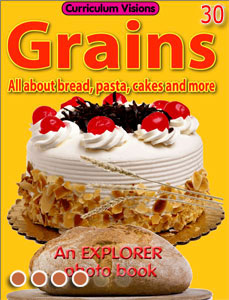Cupcake is an American term for small individual cakes. A similar, but smaller, and less-decorated, type of cupcake is known as a fairy cake in other parts of the English-speaking world. Because the addition of icing toppings makes the cakes more attractive to eat, cupcakes have more of less replaced fairy cakes world-wide.
Cupcakes were first described in American cookery books at the start of the 19th century. At this time, each cake was literally made in a teacup, which is why the term cupcake soon took hold.
The advantage of a cupcake is that it is easy to measure the ingredients, as they can be measured by cups (volume) rather than weight. But note these cupcakes were first intended to give a simple way of measuring by volume, and they were not intended to be cup-shaped cakes.
These simple cakes are made up of the four standard cake-making ingredients: one cup of butter, two cups of sugar, three cups of flour, and four eggs. The result is a plain yellow cake mix which can then be spooned out into cupcakes.
To make them more interesting, other ingredients are often stirred in, such as raisins, and chocolate chips.
Cupcake baking is very practical. A large cake takes much longer to bake than the equivalent volume made of cupcakes. That is because cupcakes have a larger surface area than normal large cakes, and the heat reaches the inside faster. They therefore use less energy to make. So the cakes measured by cups, quickly became cakes cooked in cups, too.
Nowadays cupcakes are normally made in muffin tins, not cups. They hold six or twelve cakes. Muffins are bigger than fairy cakes, so using a muffin tin makes a bigger cupcake.
A cake in a mug is now a popular way of making cupcakes. In this case the ingredients are put into a mug and then cooked using a microwave. The whole process takes under 5 minutes and makes a hot snack.
Notice that this is really a mugcake, because the method cannot use less than 1 egg and so the other ingredients must be in proportion. They would not fit into a cup.
Muffin tins are made of metal, so the heat from the oven is conducted efficiently into the sides and base of the cupcake, making it cook faster. They are often baked in paper liners so that they are not greasy to handle afterwards, and the liner helps to stop the cupcake from breaking or crumbling.
The paper liners are fluted (corrugated). There is a good technology reason for this. It is not just to make them look pretty. Corrugated paper is far stronger than plain paper, so a thin liner will support the cake much better than a plain one (just look at corrugated paper to see this).
The advantage of the cupcake is that the top can be decorated and remain intact until it is eaten, in contrast to a flat cake where the decoration has to be cut up. That means the decoration can become a work of art, making the cupcake a more attractive purchase.
Many cupcakes are made into themes, for example, at Halloween and at Christmas. But they can be made into many other themes, too. For example, a set of cupcakes was made for every element of the periodic table as far back as 1907. The icing was coloured to match the periodic table as well. (It needs 108 cupcakes!)
You can think of many more simple themes. For example, you could make a cupcake representing each month of the year, each day of the week, each day of the month, each person in a class, and so on.
You can use a simple cupcake to think about food and ingredients, changing materials, calories, proportions, and many other science and mathematics principles. The best thing is - they can be eaten at the the end!







